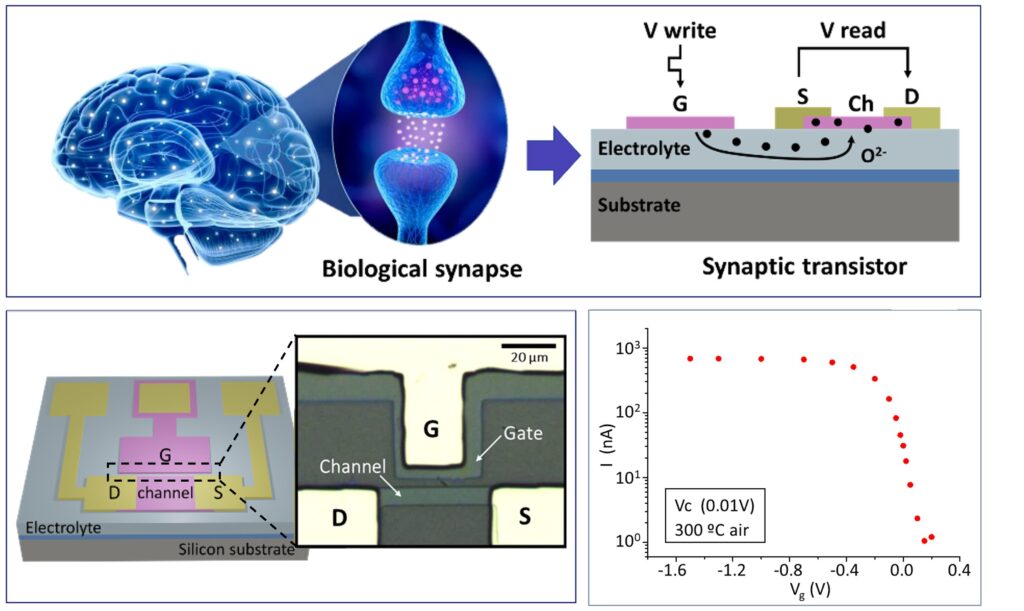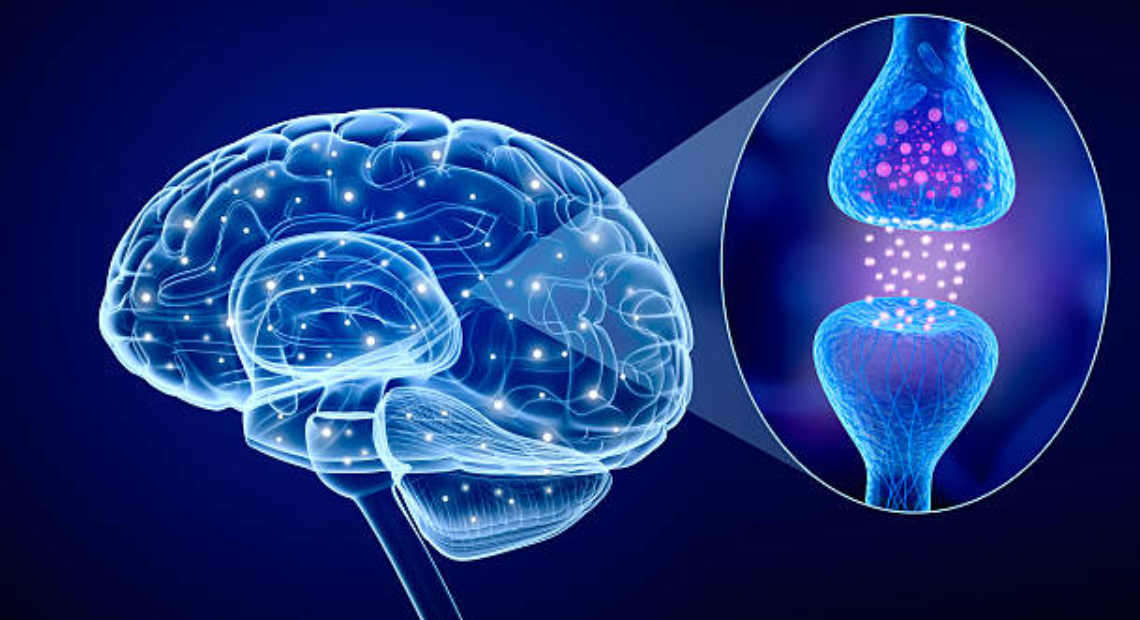In the recent years, the synaptic transistors have gained attention for analog computing solutions. They aim to overcome the Von Neumann bottleneck, a limitation in traditional digital computing caused by the separation of data memory and processing units. Synaptic transistors mimic the behaviour of biological neurons improving the energy efficiency and processor performance for novel brain-inspired computing, such as neuromorphic computing and artificial intelligence.
Among the possible solutions proposed in literature, Electrolyte-Gated Transistors (EGTs) have positioned as a promising choice for synaptic transistors. EGTs are essentially conventional Field-Effect Transistors (FETs) where the gate dielectric is replaced by an ion-conducting electrolyte. However, current EGTs rely on unstable electrolytes, such as liquids or polymers. Alternatively, more robust ion conductors operate the EGTs at elevated temperatures (above 200ºC), which are not compatible with standard microelectronics.
To address this, Albert Tarancón, Prof. ICREA and head of the Nanoionics and Fuel Cells group at IREC, was granted a top-up European Research Council (ERC) Proof of Concept (PoC) grant for TRANSIONICS (GA 101066321), focusing on Solid-State Ionics Synaptic Transistors for Neuromorphic Computing and following up the research carried out in a former ERC Consolidator Grant project, the ULTRASOFC.
TRANSIONICS has fabricated a three-terminal thin-film EGT based on a ceramic electrolyte able to work at low temperatures. In this device, a gate bias is applied to change the oxygen stoichiometry of the channel by pumping oxygen ions across the electrolyte. In such a way, the conductance of the channel is controlled by an analogic fashion, giving rise to a non-volatile multistate transistor. This technology is compatible with microfabrication processes, allowing for low-cost and large-scale production.

The project has focused both on the technical development, as well as the market uptake of the transistor. The synaptic transistor developed by TRANSIONICS showed optimal characteristics for neuromorphic computing, such as the possibility of varying almost 3 order of magnitude the channel’s conductivity, a very linear and symmetric synaptic behaviour induced by current pulses and a non-volatile character of the states. With the aim to reduce the operating temperature below 100 ºC, a microfabrication route employing large-scale fabrication techniques has been demonstrated, allowing a first generation of micro-sized and a second generation of nano-sized devices. The EGT prototypes could be grown on both oxide-based single crystal substrates and on silicon substrates, enabling compatibility with existing microelectronics manufacturing processes. These developments are being compiled into a scientific paper that will be published shortly.
Concerning the business development plan, a market assessment was carried out with a specific focus on the neuromorphic computing sector. Through discussions with potential end-users, the study resulted in the identification of both the market entry strategy and business model, collected within a preliminary business plan.
Prof ICREA Albert Tarancón, Francesco Chiabrera, Philipp Langner and Nerea Alayo, from the Nanoionics and Fuel Cells group at IREC have been the main contributors to this project.
Funded by the European Union. Views and opinions expressed are however those of the author(s) only and do not necessarily reflect those of the European Union or the European Research Council Executive Agency (ERCEA-granting authority). Neither the European Union nor the granting authority can be held responsible for them.




